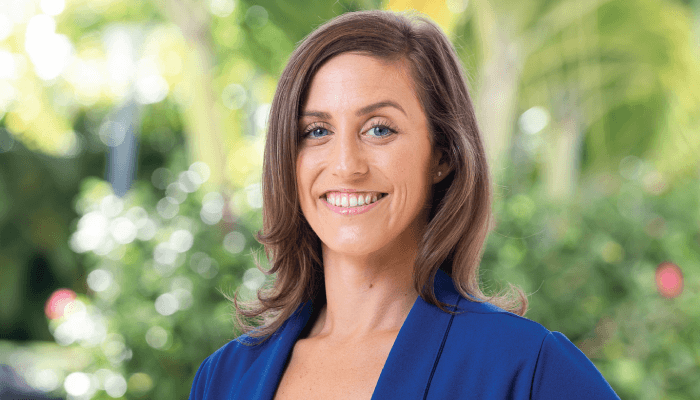
Can you give me an overview of your background and research interests?
I am an Associate Professor of Forensic Sciences and Chemistry at Chaminade University of Honolulu in Hawaii. I teach courses in analytical chemistry, instrumentation, forensic chemistry, and more.
I got involved in GC×GC when I began analyzing odors from decomposing remains to see which chemicals could prompt cadaver-detection canines to alert. We wanted to know more about cadavers’ complex odor and multidimensional GC was the best tool to tackle this challenge. Since then, I have developed my career as a faculty member focusing on odor analysis using flow-modulated GC×GC systems. Our applications of interest include method translation, forensic odor analysis, food analysis, traditional medicines, and more.
Outside research, I am interested in undergraduate pedagogy surrounding instrumentation in analytical chemistry (incorporating research experiences into the classroom environment) and implementing culturally sustaining pedagogy. I am also passionate about promoting the adoption of GC×GC for end users who can significantly benefit from transitioning from conventional 1D GC to a multidimensional approach.
What is the state of GCxGC today?
GC×GC has come a long way since its inception. Our workshops and conferences once revolved around fundamental instrument design and optimization – important topics to develop a foundation for an emerging technique. Now, we see conferences dominated by exciting applications across a range of topics – metabolomics, biomedical diagnostics, forensic science, environmental monitoring, drug analysis, agriculture, and forestry, to name just a few.
We’ve also seen a major shift toward using GCxGC for large batch data. Now, the challenge lies in how to handle that data when conducting research in complex applications. We are starting to see the emergence of data science as the next critical tool in our multidimensional chromatography toolbox. It will be exciting to see where this data revolution takes the field in the next five years.
What do you see in your crystal ball for GCxGC?
I anticipate a huge emergence of machine learning and artificial intelligence. We are recognizing the value in these technologies, but they have yet to be presented in a way that the average user can easily implement. I am curious to see what tools become available to help us get the most meaning from our results.
In terms of your research today, what “gets you out of bed in the morning?”
One of my greatest joys as a scientist is the pursuit of knowledge. There is something exhilarating about creating knowledge that did not previously exist. The thrill of a new discovery, a new tool, a new approach, or a new way of looking at something – that is what gets me out of bed in the morning. There is plenty of space for failed experiments, troubleshooting, and other challenges; however, the moment you stumble across something exciting, it is all worth the trouble.
Do you have any “top tips” for getting the most out of an instrument or technique?
My best piece of advice is to network with individuals in the relevant scientific community using the technique or instrument. In the case of GC×GC, conferences and other networking events were critical for me as I learned the technique, began using it, and eventually developed a research program centered on it. The GC×GC community is filled with individuals who want to share their expertise. Developing relationships with instrument vendors is also a valuable resource, especially when it comes to day-to-day operations.
Tell me about your GC×GC Scientific Achievement Award?
I received the John Phillips Award at the 18th GC×GC Symposium in 2021. The award is given to emerging scientists in the field of GC×GC. When I was a graduate student, I always looked up to those who received this award, hoping to one day make that level of impact in my field. Winning it myself was one of the greatest honors of my career thus far. The award letter stated that it was given for my breadth and depth of activities, including outstanding research, strong leadership, and a commitment to mentoring promising students. It is an honor to be recognized for scholarly work, but extra-special for me to be recognized as a mentor; the students I work with and their contributions to the research are everlasting in the academic world, but also majorly impact their lives as scientists. It brings me great happiness to be part of their journey.
Anything else you’d like to add?
If you are curious about multidimensional chromatography or GC×GC, I invite you to email me (katelynn.perrault@chaminade.edu) and share your thoughts and questions – or even just say hi and introduce yourself. I am always eager to connect individuals with resources, information, or other experts who can help get them going!




